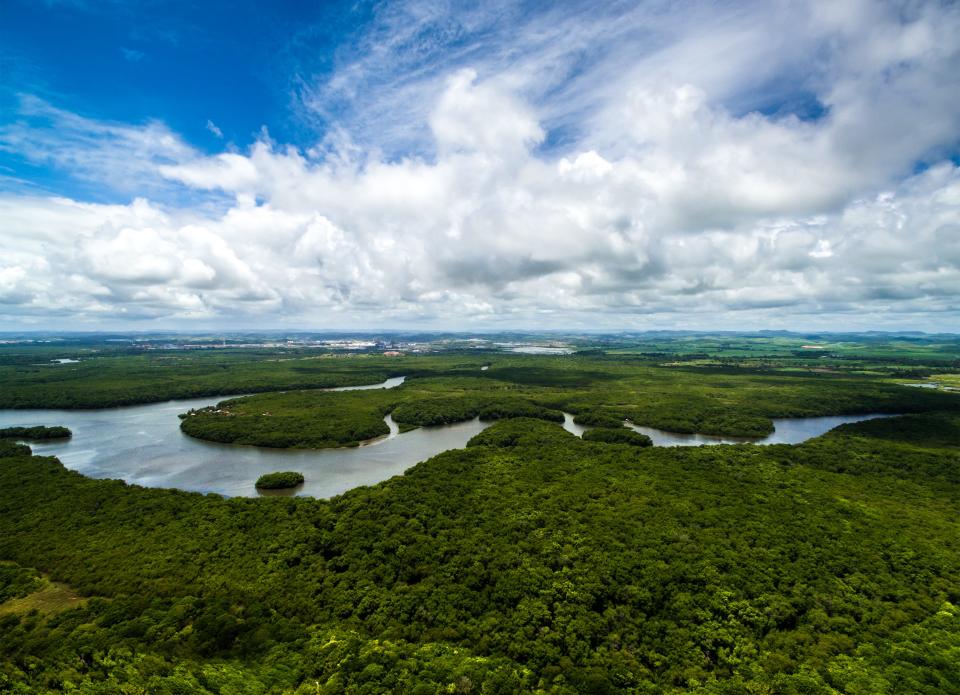Baker: Complex issues arise with beef

It would be difficult to overstate the financial impact of the beef industry on the U.S. economy. With more than 727,000 operations housing 93.6 million head of cattle, and some 30 million animals slaughtered each year, it's estimated that cattle production this year will account for about 17% of the $462 billion in cash earnings from all U.S. agricultural commodities combined.
And yet, between 1990 and 2020, there have been only five years when the U.S. exported more beef than it imported. While our exports consist mostly of high-quality meats (product shipped to Japan and South Korea constitutes 47% of all beef exports), most imports consist of boneless meat trimmings used in making ground beef.Currently 68% of all imported beef comes from three countries: Canada (28%), Mexico (23%), and Brazil (17%). Interesting note on that last statistic: Imported beef from Brazil is up over 73% from last year. I’ll come back to that point in a bit.
All of which leads us to the environmental impacts of cattle, which play out very differently in different parts of the world.
There are a lot of issues to consider, but I’ll focus here on just two hot-button topics associated with cattle that have recently garnered a lot of media attention.
Methane: The rumen is the first and largest region of a cow’s four-chambered stomach. It’s job is to provide a warm, wet sack where bacteria, protozoans, and fungi can break down otherwise indigestible plant fiber into usable fatty acids. Depending on diet, the process causes an adult cow to release 66-132 gallons of methane gas from its rumen each day.

Methane is a problem but the beef industry is working on changes
Methane is widely understood to be a much more potent greenhouse gas than carbon dioxide (with about 29 times the warming potential, on a molecule-by-molecule basis). But the good news is that while carbon dioxide emissions from the burning of fossil fuels remain in the atmosphere indefinitely, methane typically only lasts about 12 years.EPA data suggest cows account for about 32% of all U.S. methane emissions, but only 3.2% of all types of greenhouse gas emissions. Because of methane’s warming potential, that’s still a problem, however researchers working with the beef and dairy industries are finding that changes in dietary additives, better animal management, and genetic selection can significantly lower the animals’ production of methane.
But that’s here in the U.S. Sixty-five percent of the world's population of cows live in India (30%), Brazil (25%), and China (10%), where environmental controls are a lot less strict.
Deforestation of the Amazon: In 2021, researchers from the University of Wisconsin-Madison reported that over the past 30 years, Brazil, home to about 60% of the Amazon rainforest, has lost 301,160 square miles of the forest — an area roughly equivalent to the size of Nevada, Colorado, and Utah combined. And a Bloomberg investigation published this year found that 70% of that deforested land has been converted to pastureland for cattle.Who’s crazy idea was it to raise cattle in a tropical rainforest?
In the mid-1960s, Brazil was governed by a series of dictators who were looking for ways to open up the country’s forests as a mechanism to solidify their support among the country’s disenfranchised poor, which led to Operation Amazon: “A land without men for men without land.”
Brazil was clearing forests the size of New Jersey annually
The cow was central to their plans. Once the government carved roads into the forest, the timber could be logged (or simply burned) off, and the grazing of a relatively small number of cows could keep the forest from regenerating. By the early 2000s, farmers were clearing a New Jersey worth of forestland each year.
However with growing international scrutiny of the linkage between Brazilian beef in fast food hamburgers and the deforestation of the Amazon, major meat packers signed a Zero Deforestation Cattle Agreement with Greenpeace in 2009 to block cattle from newly deforested areas from entering their supply chain.
This and increased surveillance by Brazilian prosecutors resulted in significant declines in Amazonian deforestation rates for a few years. But cattle producers in remote areas (Brazil has more than 2.5 million ranches) found a workaround, and in 2021 deforestation in the country reached a 15-year high with an area of lost forest about the size of Connecticut.
The major meat-packing companies are on record for checking that their suppliers have complied with their Zero Deforestation policy. However, Brazil has no system for tracking individual cows from calf to abattoir and a University of Wisconsin study found that cattle are moved among different operations two to three times, on average, prior to slaughter.
It is through these indirect supply chains, from unregulated operations to those with “clean” records, that cattle grown on recently deforested land in the Amazon are increasingly reaching dinner tables in restaurants and homes throughout the Global North.
It’s called cattle laundering.
Ken Baker is a retired professor of biology and environmental studies. If you have a natural history topic you would like Dr. Baker to consider for an upcoming column, please email your idea to fre-newsdesk@gannett.com.
This article originally appeared on Fremont News-Messenger: Baker: Complex issues arise with beef

